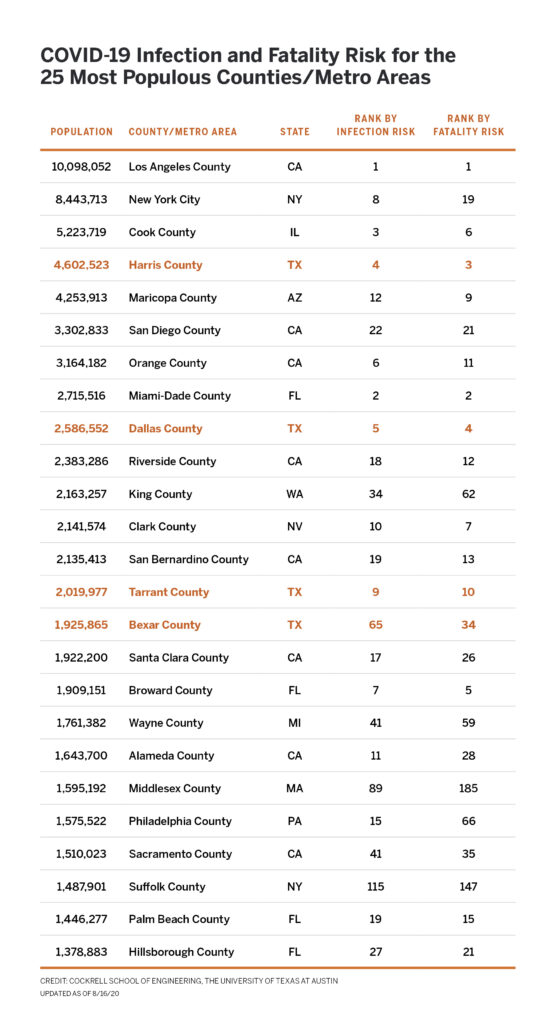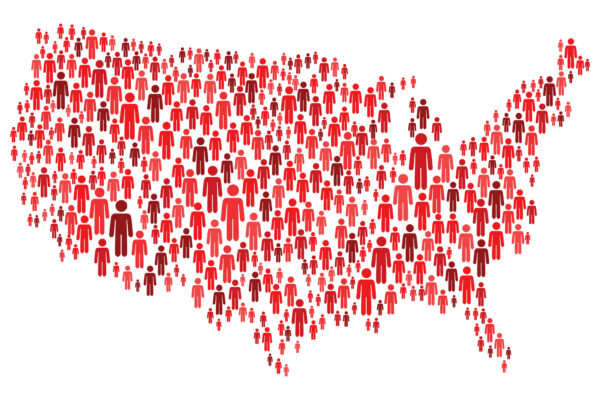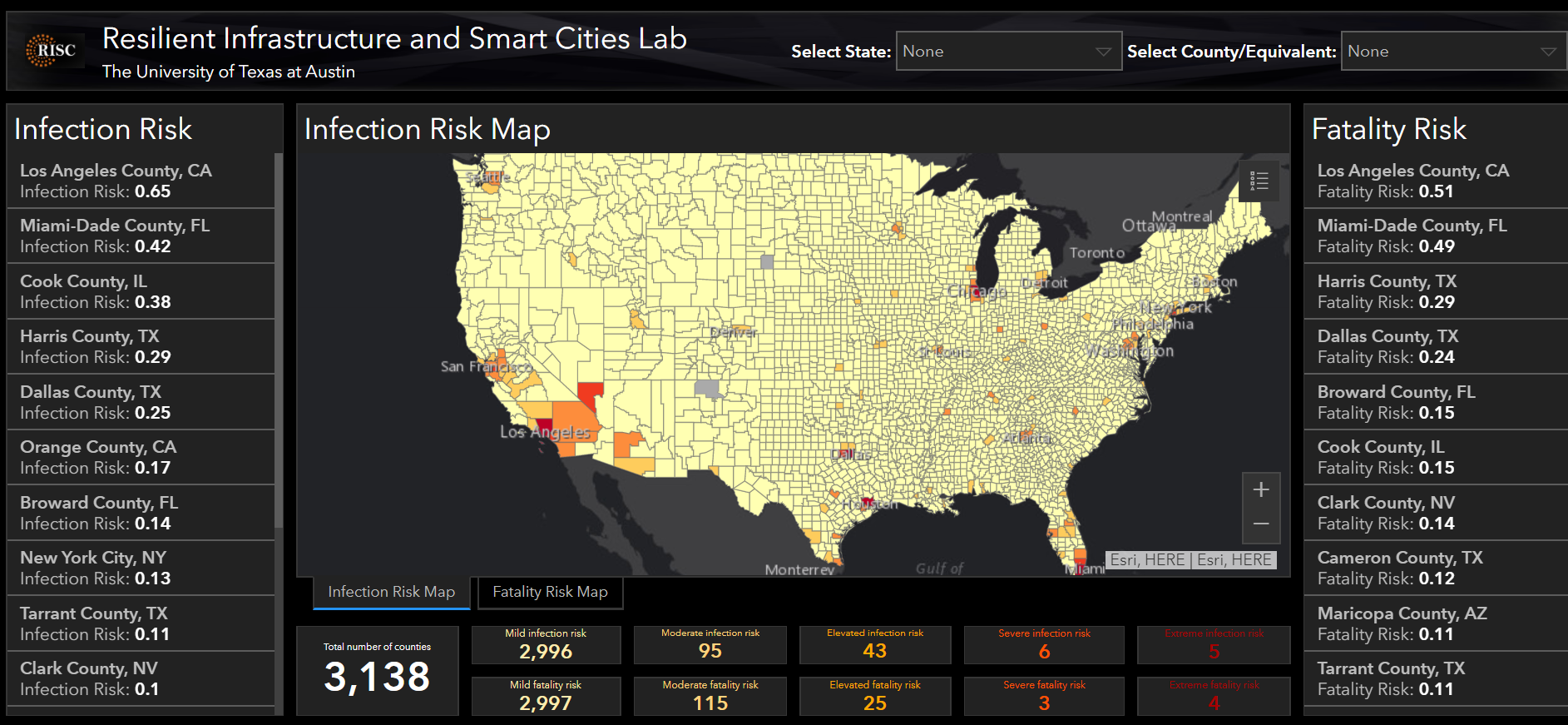AUSTIN, Texas — People living in some of the largest U.S. cities and their surrounding areas face the highest risk of contracting COVID-19 in the near future, according to a new set of online dashboards created by researchers in the Cockrell School of Engineering at The University of Texas at Austin.
The risk analysis model used by the website examines more than 3,000 U.S. counties and features three dashboards that focus on aspects of community resilience: risk, exposure and vulnerability. Counties are scored on 13 different variables across the three dashboards, accounting for socioeconomic circumstances, population density, transportation infrastructure and other important metrics for measuring the pandemic, such as available intensive care unit beds and the average number of new cases.
The researchers said the new model presents the most comprehensive look yet at the virus’s current and future spread across the U.S. Other models have mostly focused on the number of cases and deaths observed in an area to make predictions about trends, rather than look at a wider variety of risk factors to understand where increased spread could occur.
“This information allows the public and decision-makers to have a better sense of the risk level of each county in terms of infection, fatality, vulnerability and exposure,” said Zhanmin Zhang, a professor in the Department of Civil, Architectural and Environmental Engineering who led the development of the dashboards. “Knowing the risks allows people to develop better insights and make more informed day-to-day decisions.”
The model is updated weekly, and it currently rates four counties as extreme for both risk of contracting the virus and dying from it: Los Angeles County, Miami-Dade County, Harris County (Houston) and Dallas County. Cook County, Ill. (Chicago) is the only other county to receive an extreme rating, and it is for infection risk, but not death risk.
Seven of the 10 most populous counties/metro areas in the U.S. rank in the top 10 for infection risk, and six of them are in the top 10 for death risk.
“The chances of being exposed to the virus in these populous counties are higher because of the massive number of daily trips created by businesses and other major points of interest — such as supermarkets, parks and restaurants — from other regions, as well as the presence of major airport hubs and highway systems,” Zhang said. “In such high-density areas, enforcing social distancing measures is a challenge, further increasing the risk of contracting the virus.”
The site provides snapshots of each county’s metrics, as well as changes over time. Local governments can use these tools to find counties with similar levels of risk and examine how effective their COVID containment measures have been.
“These indicators of impending risks can help officials make decisions on enforcement of COVID-19-related restrictions, such as social distancing norms, stay-at-home orders, use of masks and sanitizers, or closing down of public spaces and institutions,” Zhang said. “The infection and fatality risk numbers are based on the combination of vulnerability and exposure factors.”
Infection vulnerability factors include the number of residents per square kilometer, the percentage of workers who use public transit, the share of the population that works in industries where remote working isn’t possible and the number of apartments and condos as a function of the overall housing stock.
Fatality vulnerability metrics include the percentage of the population over age 65, the number of ICU beds per 10,000 people, the share of adults with health problems, the number of people lacking health insurance coverage and the percentage of adults with limited English fluency — an indicator that people might have trouble accessing services.
Exposure variables include the presence of busy roads and highways that bring in travelers, 14-day averages of COVID cases, proximity to major airports, and a social distancing indicator using the number of “point of interest” visitors — people going to gathering places such as restaurants and bars, based on anonymized mobile data.
Visit the website and review the dashboards at https://covid19.caee.utexas.edu.





